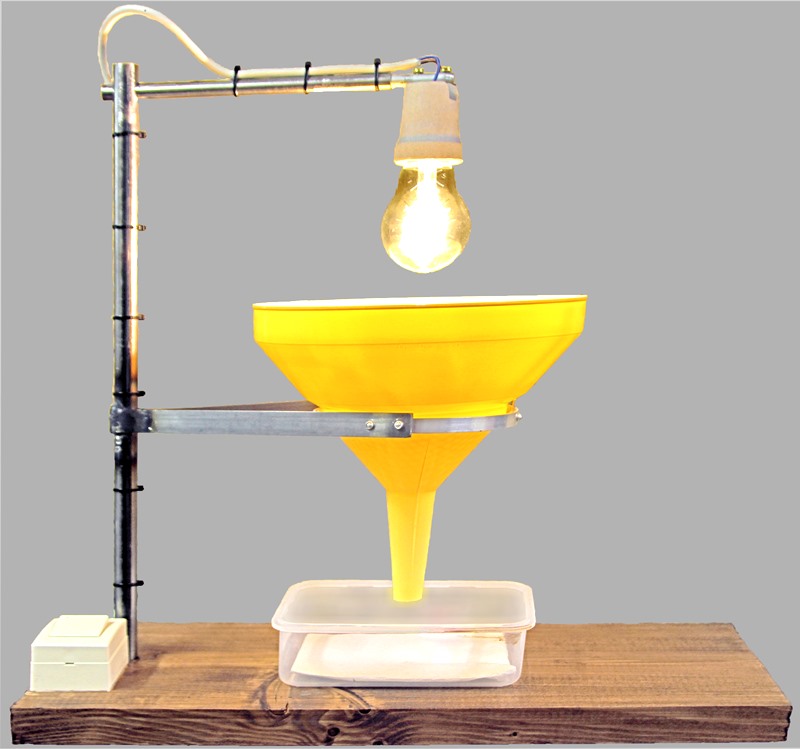The photographic approach of springtails and more broadly that of soil microfauna is confronted with technical difficulties, but also with the need to find these animals within the litter or the various substrates they occupy. We can content ourselves with gently turning the leaves or the humus hoping to discern them, but we can also take samples of soil that will be treated with a device called "apparatus of Berlèse".
This very simple device, particularly useful for collecting microfauna samples, was designed by the Italian entomologist and botanist Antonio Berlèse. The latter, assuming that the majority of this soil population was lucifuge and that it needed moisture to prevent desiccation, imagined a device with a source of light and heat likely to scare the microfauna. Then he had only to channel it to a receptacle.
There are commercially available devices Berlèse ready to use, but their cost may seem high, given the rudimentary nature of such a device, especially since its manufacture is within everyone's reach.
Below, we can see the one that I realized and that required the following elements for a price of returns less than 30 euros (we can imagine much simpler):
- Base (wooden board).
- Supports (small tubes and metal profiles).
- Socket, bulb, switch, wire, necklaces.
- Funnel and aluminum grill.
- Receptacle.

Operation of the Berlèse apparatus:

We turn on the lamp and wait until the heat of the latter gradually dries the deposit. This dehydration will result in lowering the microfauna to the bottom where it seeks moisture.
Arrived at the sieve, it will fall into the funnel and will be collected in a receptacle that can be filled with alcohol at 70 °, if we wish to observe these animals under binocular.
Note: In case you just want to photograph these small live animals, just recreate a natural background (foam, decomposed wood, etc ...) that we will care to moisten and from which we can realize directly macrophotographies.